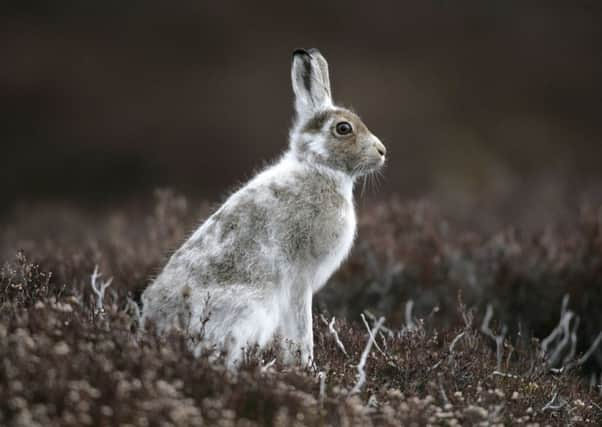Duncan Priddle: Scotland's native hare is under fire and needs help


It’s real, local, cute and fluffy and currently decked in white. But it’s an animal that, despite having some official protection, is shot legally in large numbers.
Mountain hares don’t want to be in the cross-sights. Left to themselves they are shy and sedentary, rarely venturing more than a couple of kilometres from their heather moorland homes unless extreme weather forces a move.
Advertisement
Hide AdAdvertisement
Hide AdBut here is the rub. They share a habitat with red grouse – a commodity on sporting estates – and so have become a target for culling.
A group I’m involved with has spent the past 18 months working to increase understanding of the mountain hare. We could not have learned what we have without the help and support of landowners in the area, for which we are extremely grateful. I’m against driven grouse shooting, just as gamekeepers would likely disagree with many of the things I do. But by establishing a consensus, a bit of trust, we have been able to gain new insights and raise the profile of Scotland’s only native hare.
The species needs this focus as our knowledge is far from complete. There are an estimated 350,000 in Scotland. Legislation allows control, as long as the killings do not threaten the conservation status of the species. But if the population isn’t a known certainty, how is it possible to set an appropriate level for culling?
The mountain hare’s role in spreading the tick-borne virus louping-ill to red grouse is often cited as a reason for control. However, a Scottish Natural Heritage report found no evidence that killing hares increases red grouse densities, with both ticks and the virus persisting where other hosts such as deer and sheep were present.
Fortunately there is no history of louping-ill in our study area. But that didn’t prevent the shooting of an estimated 1,500 mountain hares across the region in 2014.
Culling is often cited as necessary to prevent over-population of mountain hares. Guns are being used to fill the void left by natural predators such as foxes and stoats – which are routinely removed as part of grouse moor management. Despite my good relationship with local landowners, I doubt I could convince them to allow natural processes to resume.
In one sense, though, grouse moors provide a security blanket for mountain hares. Elsewhere, uplands are managed for commercial forestry or intensive sheep farming, neither of which is good for the species.
Additional kills of a different sort come from illegal coursing. Given the criminality of the undertaking, it is impossible to estimate the death toll, but the remote nature of the uplands allows the activity to carry on unchecked.
Advertisement
Hide AdAdvertisement
Hide AdMountain hares are in serious trouble. Habitat loss and fragmentation is reducing their range further still. And climate change is also likely to affect their continued survival.
So we need to learn to love the mountain hare. Get involved. Contact your local politicians. Join our survey group. If you own some upland moor, how about diversifying into wildlife tourism? Driven grouse shooting is thought to provide 1,072 jobs and bring in £23.3 million to the Scottish economy. Compare that to the 39,000 jobs and £1.4 billion generated from recreation.
Duncan Priddle works for a local authority and has over 20 years of countryside management experience